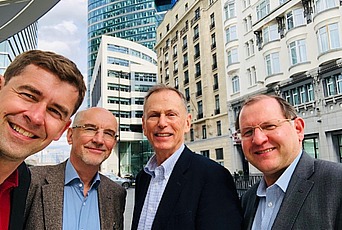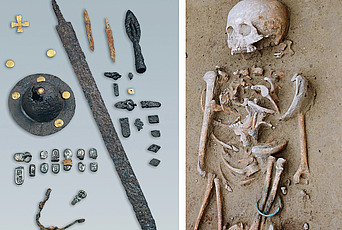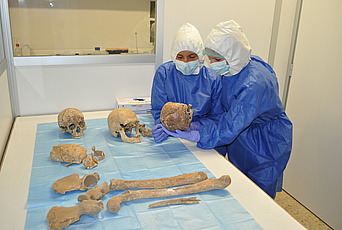New Study of Ancient DNA Reveals Long-Distance, Trans-Eurasian Migration of 7th-Century Avar Elites
A cross-disciplinary analysis of ancient genomes by a team of geneticists, archaeologists, and historians from institutions across Europe, Asia, and North America participating in the European Research Council (ERC) project HistoGenes, of which Professor Emeritus Patrick Geary is one of four principal investigators, has answered questions about the mysterious Avar population whose origins have remained enigmatic for 1,400 years.
The Avars ruled the lands of modern-day Hungary, Romania, Slovakia, Austria, Croatia, and Serbia for more than 200 years, beginning in the sixth century CE. The Avar's origins, however, has been unknown until now. Analyzing 66 individuals from the Carpathian Basin, including ones found in the gold-filled graves of the Avar elite, the paper, published in Cell, traces their genetic origin to a faraway region of East Central Asia, revealing one of the largest, most rapid long-distance migrations in ancient human history.
The study, titled “Ancient genomes reveal origins and rapid trans-Eurasian migration of 7th century Avar Elites,” is one of the first major publications from the HistoGenes team that is studying the dynamic population structures and movements in the Carpathian Basis between 400 and 900 CE through the genetic, anthropological, archaeological, isotopic, and historical analysis of over 6000 individuals found in some 100 cemeteries across central and eastern Europe. HistoGenes is not only by far the largest study of genomes sequenced from ancient DNA thus far attempted but is also pioneering how geneticists, archaeologists, anthropologists, and historians can together answer questions old and new about the past.
In addition to Geary, the team’s principal investigators are Johannes Krause of the Max-Planck-Institute in Leipzig and Jena, Tivadar Vida of Eötvös Loránd University Budapest, and Walter Pohl of the Austrian Academy of Sciences.
Geary first joined IAS as a Member in the School of Historical Studies (1990–90) before being appointed to permanent Faculty in 2012. His work extends over a vast range of topics in medieval history, both chronologically and conceptually—from religiosity and social memory to language, ethnicity, social structure, and political organization.


